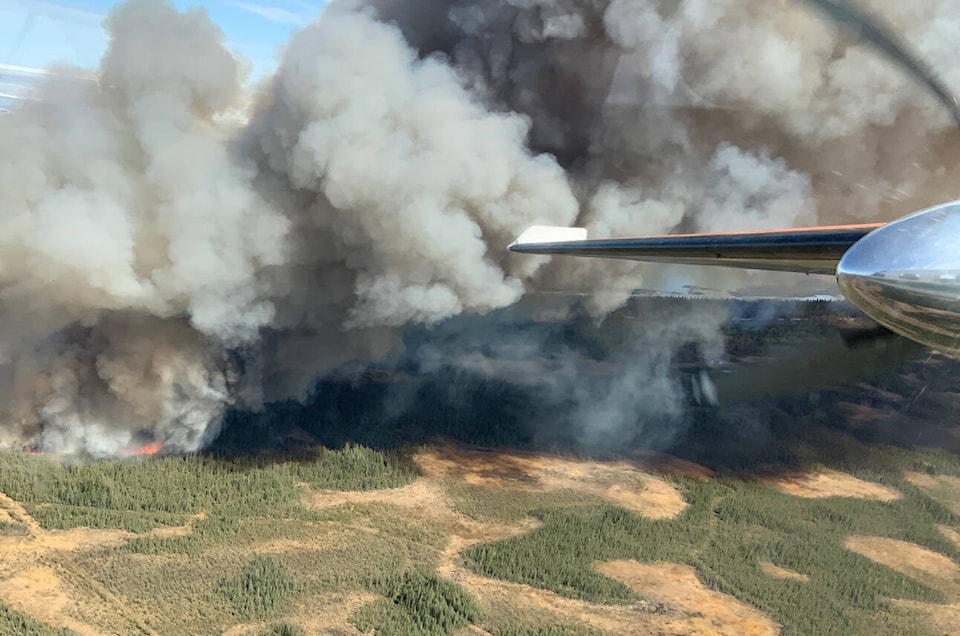Projected drought conditions have officials with NWT Fire bracing for another high-risk fire season this year.
An update was given by GNWT officials on the afternoon of April 18.
“I think it’s safe to say, going into another drought season, we’re looking at what I perceive to be the continued concern for fires,” said forest management fire operations manger Richard D. Olsen. “We’re looking at three or four months of relatively good burning conditions before we start to see any significant rain relief.
“So we’re going into the third season of drought with some quieter conditions in the Beaufort Delta.”
Olsen said the hope was that the El Nino effect would begin to bring precipitation levels back to normal near the end of the year, but even then cautioned the NWT needed above average levels of water to get back to normal.
In the interim, he said the expectation is that June and July will be high risk for wildfires again this year with a lot of potential for significant growth, deep-burning fires.
He noted overall precipitation will influence operations.
Much of the predictions were based on the GNWT’s fire meteorologist using models to forecast the fire season. According to the three-month competent forecast, some areas may experience significantly higher than normal temperatures going into the spring, potentially over 10 C higher.
Olsen said NWT Fire is working to establish supply agreements ahead of time in the event more personnel are needed to hold back the flames this summer. Training and staffing in the Deh Cho and South Slave regions have been moved ahead of schedule. Helicopter units and rotor wing units are being activated earlier. Weather briefings will begin April 29. An additional helicopter is being staffed to ensure more water drops from towed buckets.
“We have a large scan planned for next week,” said Olsen. “We’re going to go over the bulk of the fires we fought last year. This is in addition to monitoring we’ve been doing over the winter.”
Olsen added the GNWT is planning to attack smouldering fires left over from winter.
Safety is also top of mind this year after a Fort Liard firefighter lost his life in the line of duty in 2023. Olsen said operations will be done at a proper pace to ensure the safety of firefighting personnel.
“This is going to be the summer where we really want to make sure that we stay down to safety and we’re taking the time to make sure that we’re making the rounds and completing all the required steps in highly dangerous situations,” he said.
Wildfire information officer Mike Westwick said the GNWT is bringing in two wildfire mitigation specialists to go through schools, campgrounds and cabins to encourage fire safety in hopes of minimizing the potential for human-caused fires.
“We plan on having folks on the ground — they’re really being present in our neighbourhoods, working directly with homeowners as much as possible,” he said.
Westwick added that the GNWT is prepared to enforce fire bans if the situation calls for it, but is looking to municipal and community governments to lead the way first.
Water in South Slave less than expected
The NWT Fire update comes on the heels of the 2024 NWT spring water outlook, which was also released on April 18. The Deh Cho snowpack is at 88 per cent of normal levels. Great Slave Lake is at a record low value for the spring and the snowpack sits at 88 per cent of normal. The Hay River basin is at a mere 61 per cent of snowpack levels.
Elsewhere in the NWT, the opposite is being observed. In the Gwich’in and Inuvialuit regions, the snowpack is over 156 per cent of normal levels. In the North Slave and Tlicho, snowpack is at 123 per cent of normal.
Olson said the low water levels may affect some tanker operations. He emphasized that up to two feet of rain is needed to get back to normal moisture levels.
“It’s really going to be the continued rainfall and a significant amount of rain and snow over winter,” he said. “We’re not out of the woods yet.”
